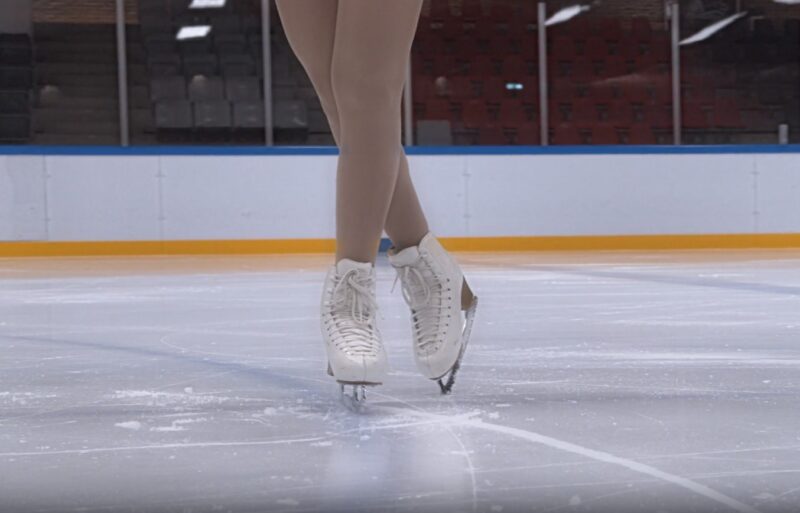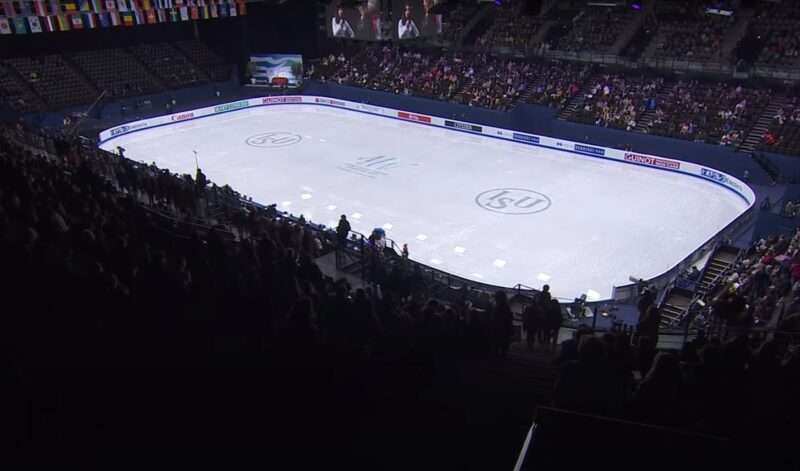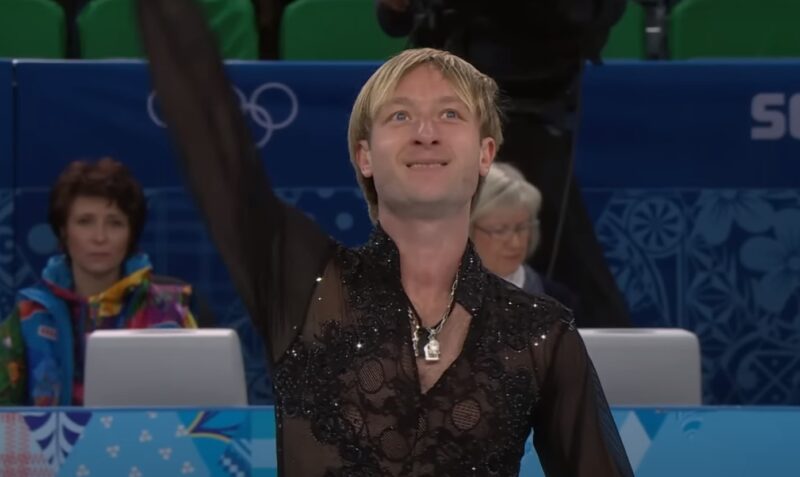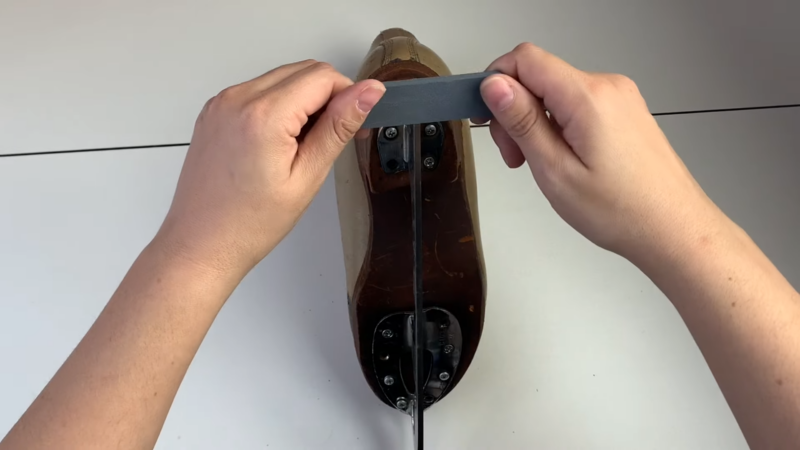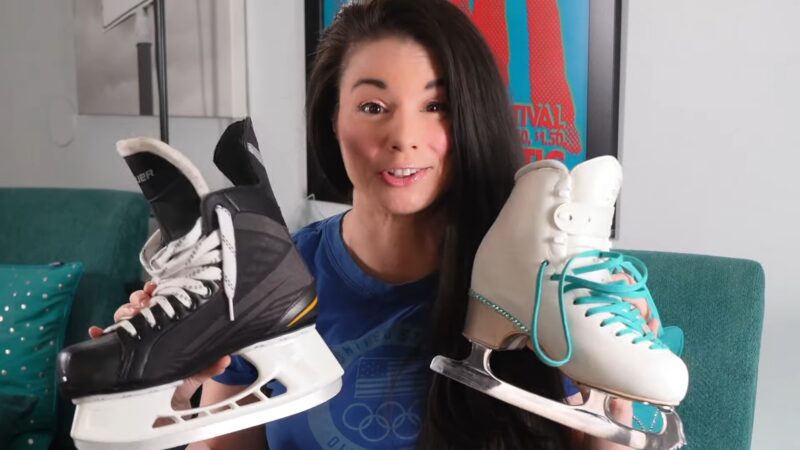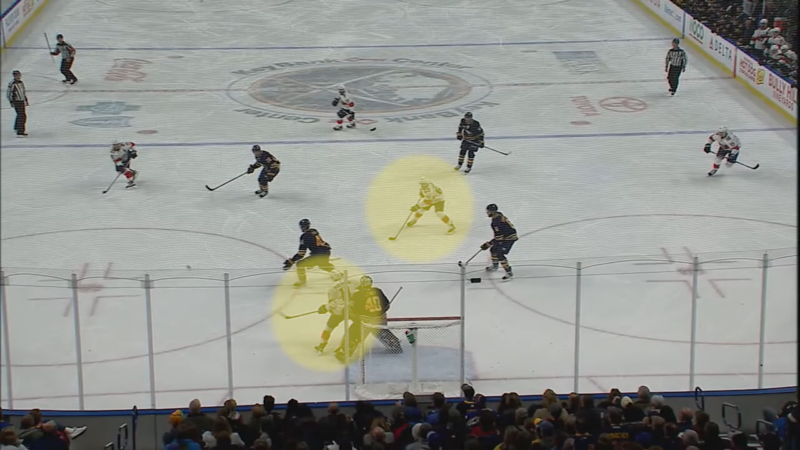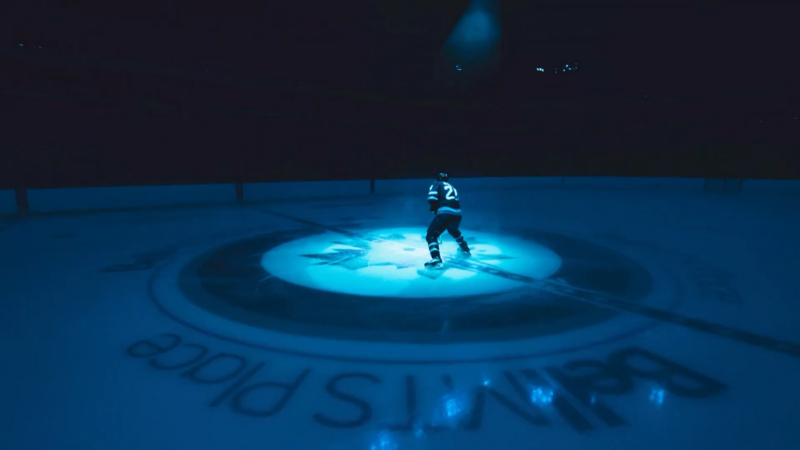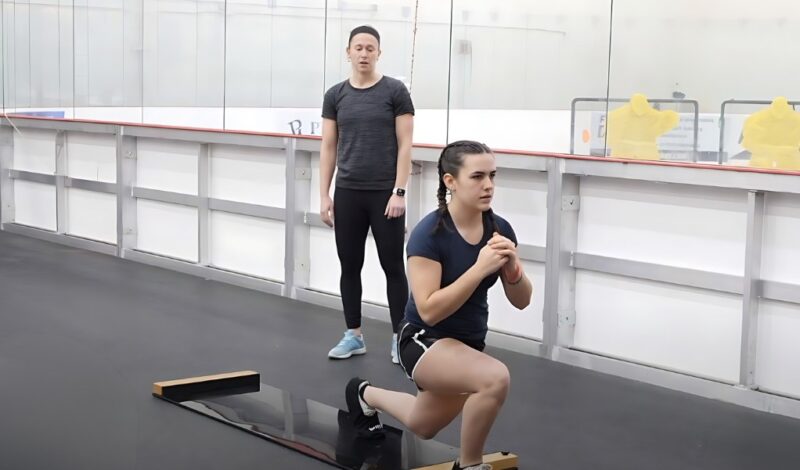
Are you ready to glimpse awesome workouts that can turbocharge your skating skills? I’m talking about the super-cool slideboard exercises!
It doesn’t matter if you are a beginner or you are experienced, slide board training is about to become your new secret weapon.
Get ready to learn how sliding around (on purpose!) can make you a stronger, faster, and more agile skater.
Let’s slide right in!
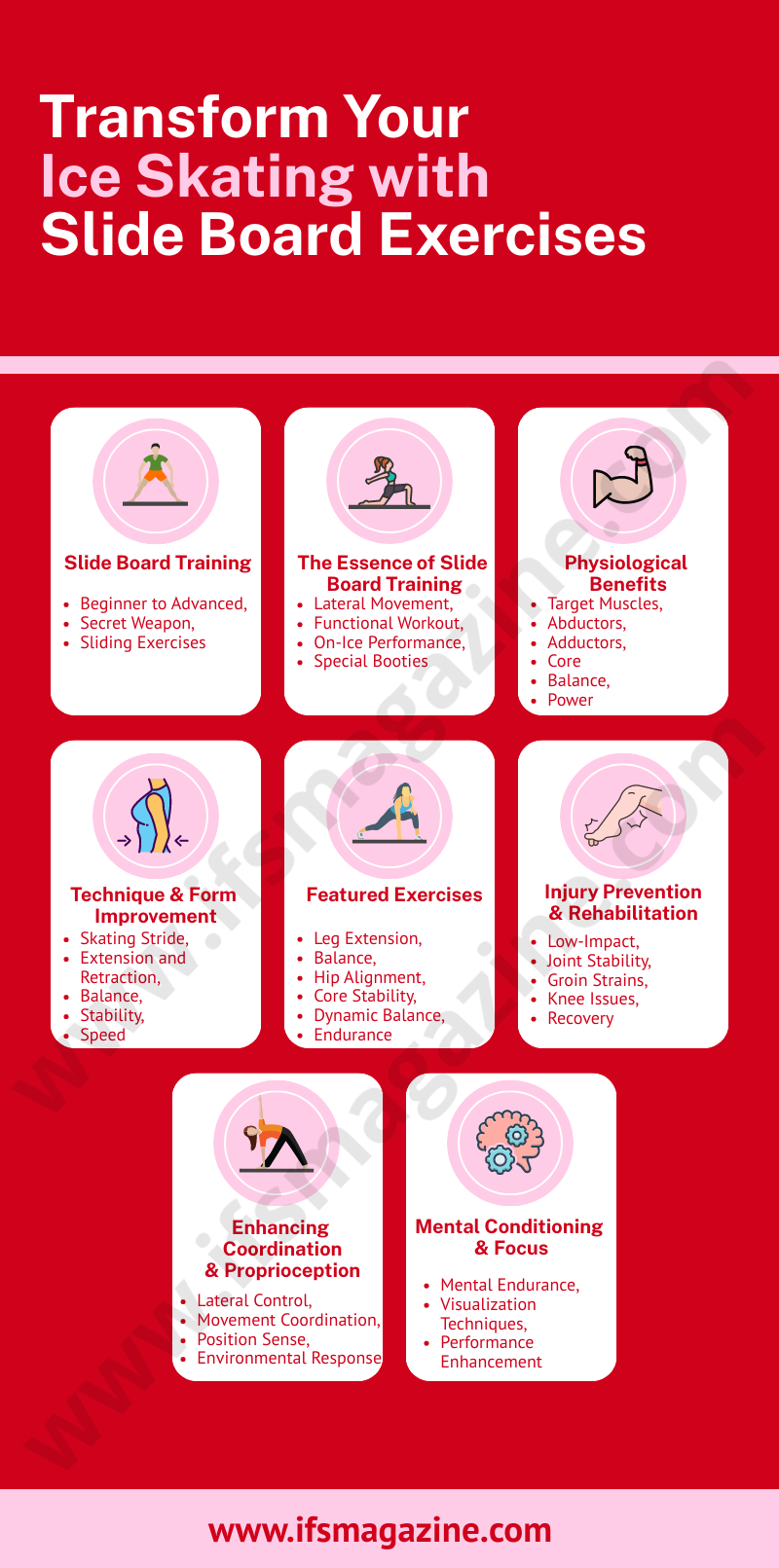
Slide Board Training
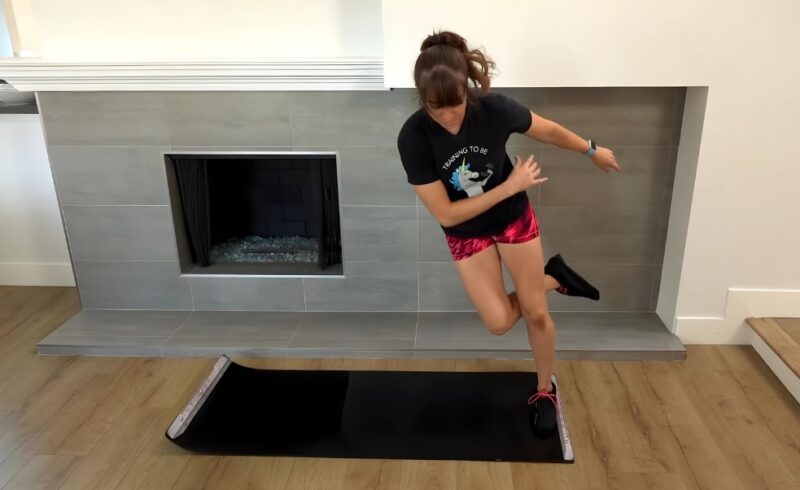
Slide board training is an innovative exercise method that mimics the lateral movement of ice skating. The board is a smooth, flat surface with bumpers on each end. Users wear special booties over their shoes, allowing them to glide from side to side with ease.
This training technique has gained popularity among ice skaters for its ability to closely replicate the skating motion, providing a functional workout that directly translates to on-ice performance.
Physiological Benefits for Ice Skaters
One of the primary advantages of this training is the specific physiological benefits it offers to ice skaters. These exercises target the muscles used in skating, particularly the abductors and adductors of the thighs, glutes, and core muscles.
Regular slide board workouts can lead to increased muscle strength and endurance in these key areas, which are crucial for maintaining proper skating form, balance, and power. Furthermore, this training can enhance cardiovascular fitness, vital for the stamina required in ice skating.
Improving Skating Technique & Form
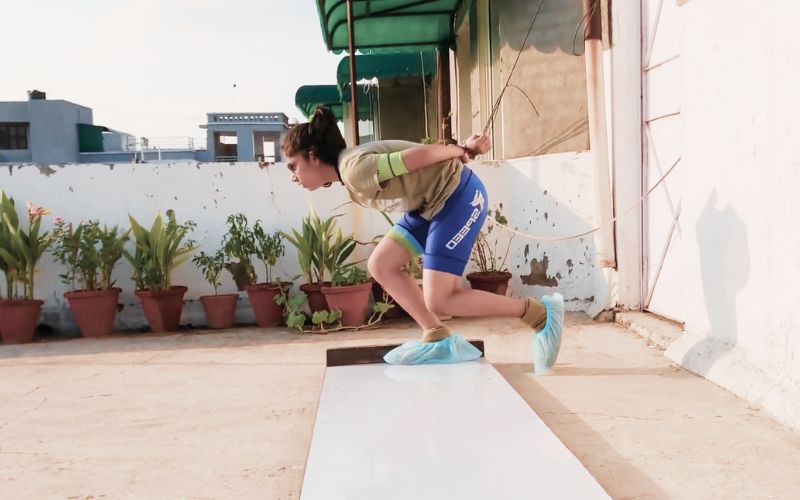
Slide board exercises are instrumental in refining skating technique and form. By simulating the skating stride, skaters can focus on the nuances of their movement, such as the extension and retraction of the legs, hip alignment, and foot positioning.
This targeted practice allows skaters to develop a more efficient and powerful stride, directly impacting their speed and agility on the ice.
Training on a board enables skaters to work on their balance and stability, which are essential for executing complex maneuvers and maintaining control during high-speed skating.
| Exercise | Focus Area | Technique Improvement | Description |
|---|---|---|---|
| Basic Lateral | Leg Extension and Retraction | Enhances stride efficiency and power | Begin with feet shoulder-width apart. Push off with one foot to glide to the opposite side of the board. |
| Single-Leg | Balance and Stability | Improves single-leg strength and control, vital for jumps and turns | Perform the slide using only one leg, while keeping the other lifted. |
| Diagonal | Hip Alignment and Agility | Develops hip flexibility and coordination for directional changes | Instead of sliding straight across, move in a diagonal pattern. |
| Board Toe Touches | Core Stability and Foot Positioning | Strengthens core muscles and improves foot precision | As you slide, bend and touch the opposite toe. |
| Rotational | Dynamic Balance and Agility | Enhances ability to perform quick directional changes | Incorporate a body twist or rotation mid-slide. |
| Speed | Speed and Endurance | Increases overall skating speed and stamina | Focus on sliding back and forth as quickly as possible while maintaining good form. |
Injury Prevention & Rehabilitation
Another significant benefit of slide board training is its role in injury prevention and rehabilitation.
The controlled, low-impact nature of board exercises makes them ideal for skaters looking to reduce the risk of common skating injuries, such as groin strains and knee issues.
The lateral movement helps to strengthen the muscles around the joints, increasing stability and reducing the likelihood of injury.
For those recovering from an injury, slide board exercises can be a gentle yet effective way to regain strength and mobility, easing the transition back to the ice.
Enhancing Coordination & Proprioception
Ice skating demands a high level of coordination and proprioception – the body’s ability to sense its position in space.
Slide board training challenges these skills by requiring skaters to maintain control and balance while moving laterally.
This type of training can significantly improve a skater’s ability to coordinate movements, adjust their position quickly, and respond to changes in their environment, all of which are crucial for high-level skating performance.
Mental Conditioning & Focus
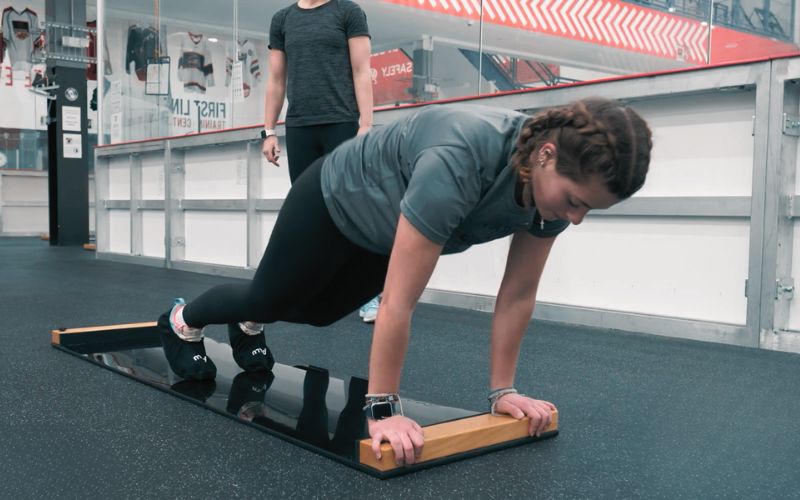
Slide board exercises also offer mental conditioning benefits. The repetitive nature of the workout encourages skaters to develop focus and mental endurance, qualities that are invaluable during training and competitions.
Skaters can use sessions to practice visualization techniques, mentally rehearsing their routines while physically executing the skating motion. This dual approach can enhance overall performance, both physically and mentally.
The Bottom Line
And there you have it, folks – the inside scoop on how slide board exercises can take your ice skating from “meh” to “amazing”! From boosting your leg power to making your moves on the ice smoother than a hot chocolate on a winter day, board training is the real deal.
So, grab your board, slip into those booties, and start sliding your way to skating stardom. Remember, every great ice skater was once a beginner, so keep practicing, keep sliding, and most importantly, keep having fun. 🌟💫👟
Related Posts:
- Can Hockey End in a Tie? Are There Shootouts in NHL…
- How Fast Can Hockey Players Skate? - Average Player…
- How to Sharpen Your Ice Skates Like a Professional
- How to Create a Home Ice Skating Rink with Synthetic Ice
- 10 Best Ice Skating Movies to Watch This Year
- Beginner’s Guide to Ice Skating: 9 Tips to Master…




